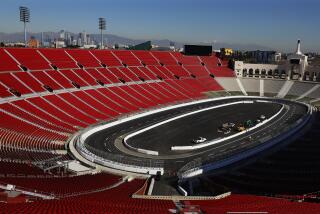Chevrolet smokes rival Honda at Indy 500 and on race circuit

Cars racing at the 99th
Chevrolet has cracked Honda’s once dominant position at the Indianapolis 500 race and on the IndyCar circuit.
Sunday’s 99th Indy 500 was won by Juan Pablo Montoya, driving for Team Penske in a car equipped with a Chevrolet engine and aerodynamic kit.
Only two drivers using Honda equipment, Graham Rahal of Rahal Letterman Lanigan and Marco Andretti of Andretti Autosport, finished in the top 10.
This year Honda and Chevrolet were the only automakers participating in the race and they have developed a spirited rivalry.
Montoya’s victory was the fifth for Chevrolet out of six races through the first segment of the 16-race Verizon IndyCar Series.
The win vaulted Chevrolet ahead of Honda in the circuit’s Engine Manufacturer Championship. Despite engine repairs at the beginning of the season that penalized Chevy 220 points, the automaker has 586 points, topping Honda’s 573.
Sunday’s “race clearly demonstrated the job we have ahead of us. But we gained a lot of information during the month here, and now have definitive goals we need to achieve in order to return Honda to the front of the field,” said Art St. Cyr, the president of Honda Performance Development.
The Santa Clarita-based Honda division designs and assembles the automaker’s IndyCar engines and other equipment.
Honda and Chevrolet invest millions of dollars in IndyCar racing annually. It is a marketing tool and serves as a research and development lab for the automakers. It also helps train engineers.
For years Honda was the dominate automaker on the circuit.
From 2006 through 2011, it was the only company making engines for the Indy 500, winning all by default. Even when other competitors jumped back in, cars with Honda engines won again in 2012 and 2014.
Race analysts say Honda’s problems this year stem from an overly complicated design for its aero kit, the carbon fiber structures and wings that hold 1,600-pound race cars to the ground and make speeds of more than 200 mph manageable for the drivers.
The teams running Honda gear have too many configuration choices and can’t figure out how to get the best performance out of the aero kits.
“Chevy has a more basic, less intricate design,” said Marshall Pruett, the IndyCar reporter for Racer Magazine.
“The Chevy and Honda engines are incredibly close,” Pruett said, “so this has become an aerodynamic game.”
Follow me on Twitter (@LATimesJerry), Facebook and Google+.







